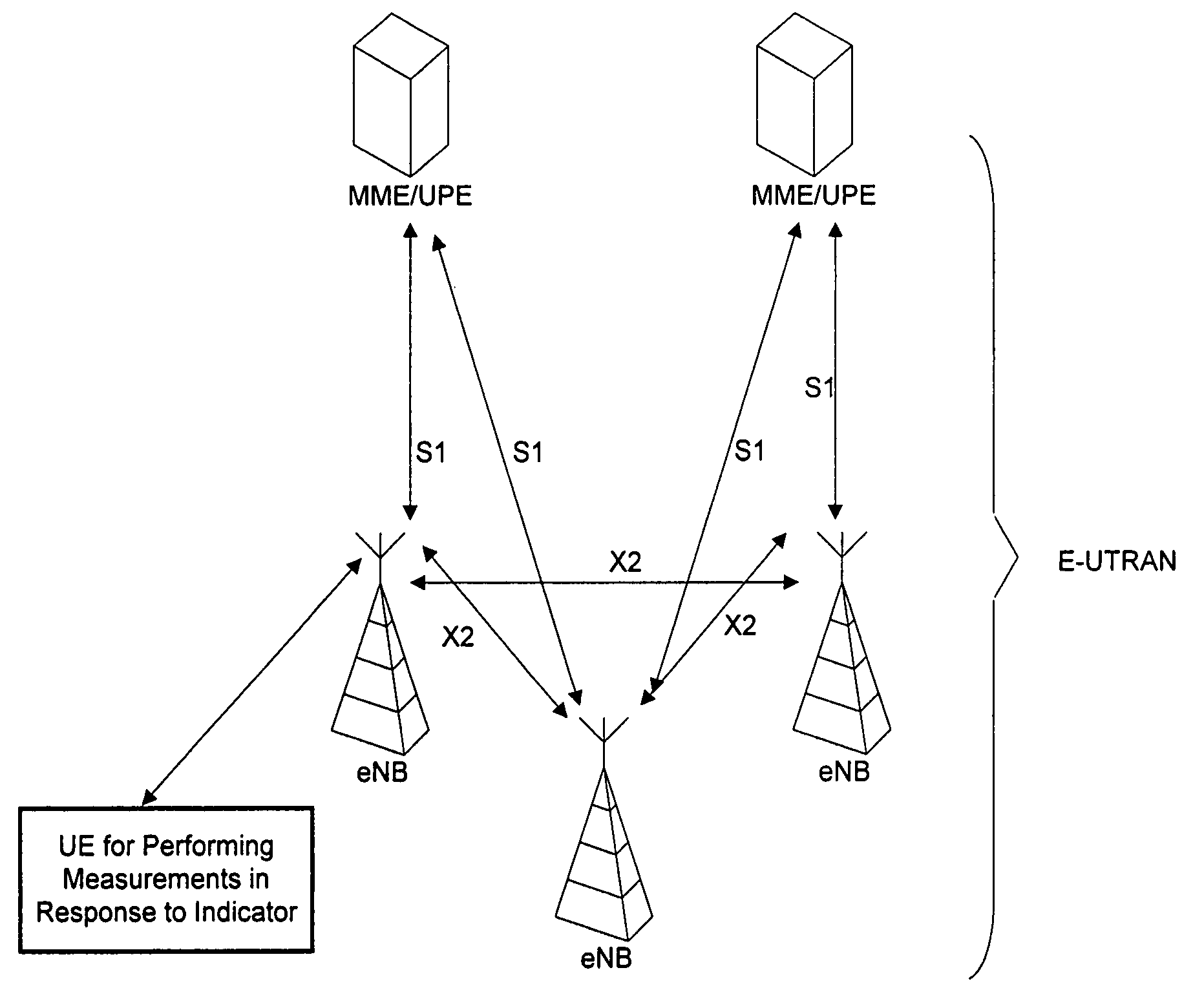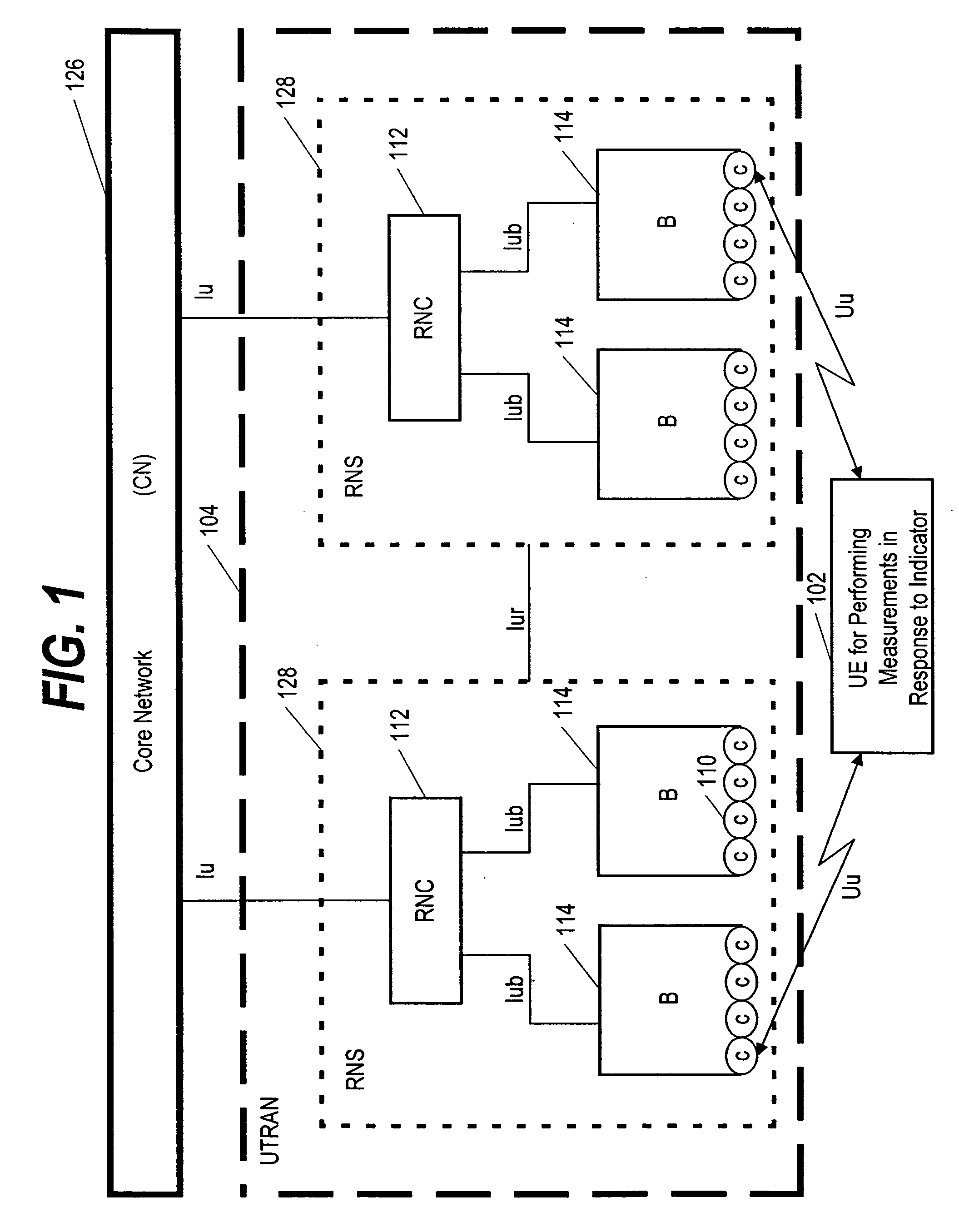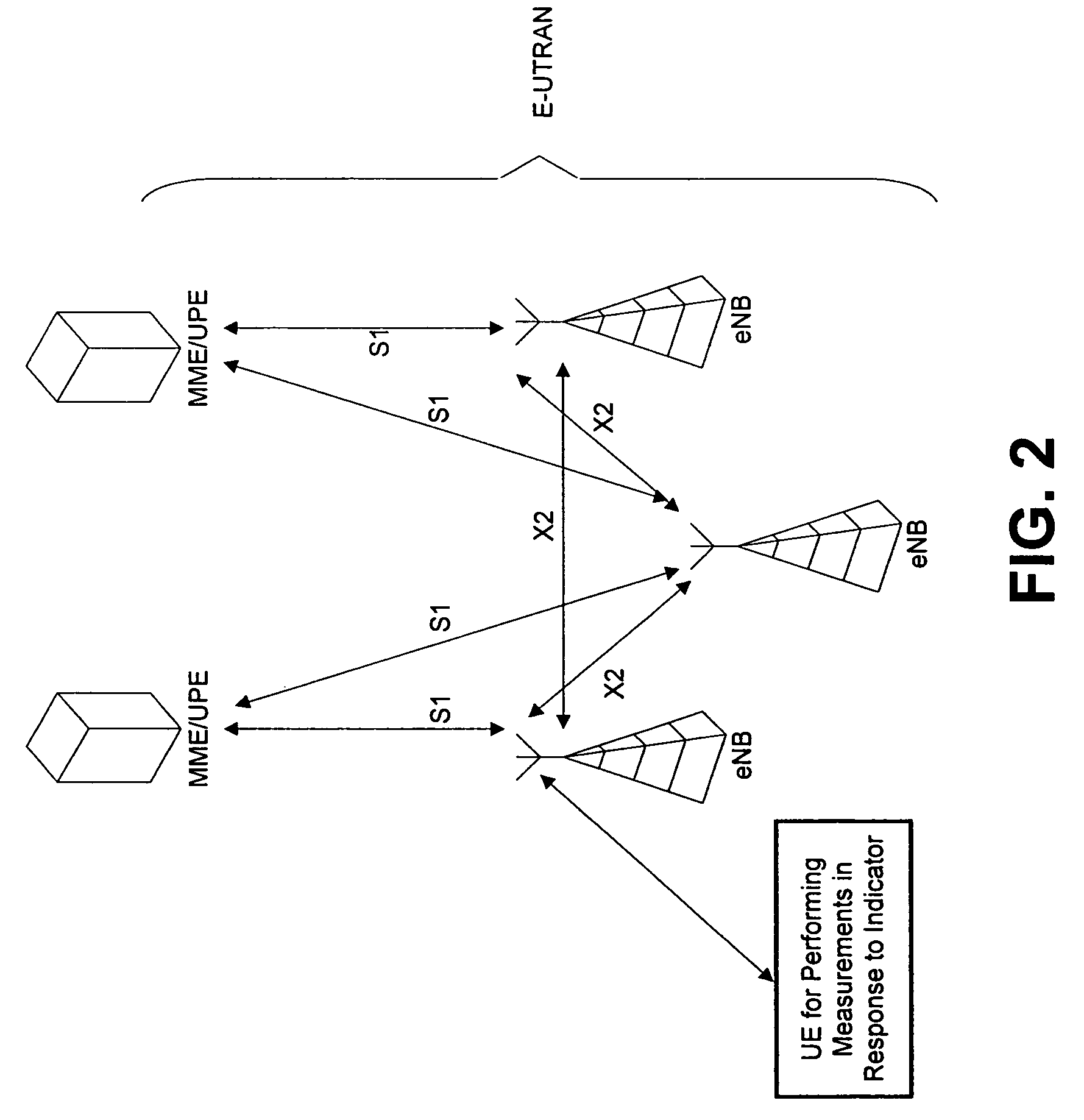Method, apparatus, and computer program product for signaling allocation of neighbor cells
- Summary
- Abstract
- Description
- Claims
- Application Information
AI Technical Summary
Benefits of technology
Problems solved by technology
Method used
Image
Examples
Embodiment Construction
[0030]A preferred embodiment of the present invention will now be described. This is merely to illustrate one way of implementing the invention, without limiting the scope or coverage of what is described elsewhere in this application.
[0031]As mentioned, each cell transmits an indicator (preferably only one bit) of the difference in unicast or MBSFN sub-frame allocation between the own cell and neighbor cells. The indicator is broadcast on a common channel, preferably a dynamic broadcast channel. The indicator is set and signals whether unicast or MBSFN allocation in neighbor cells is the same or not compared to the own cell
[0032]An example of the present invention is shown in FIG. 3, where the indicator would be the same for all cells of a Node B: neighbor cells of Node B 1 have different unicast or MBSFN allocations. In consequence, the indicator broadcasted in the cells of Node B 1 is on. Node B 1 is aware of MBSFN or unicast allocation in cells of the group of (6) surrounding No...
PUM
 Login to View More
Login to View More Abstract
Description
Claims
Application Information
 Login to View More
Login to View More - R&D
- Intellectual Property
- Life Sciences
- Materials
- Tech Scout
- Unparalleled Data Quality
- Higher Quality Content
- 60% Fewer Hallucinations
Browse by: Latest US Patents, China's latest patents, Technical Efficacy Thesaurus, Application Domain, Technology Topic, Popular Technical Reports.
© 2025 PatSnap. All rights reserved.Legal|Privacy policy|Modern Slavery Act Transparency Statement|Sitemap|About US| Contact US: help@patsnap.com



